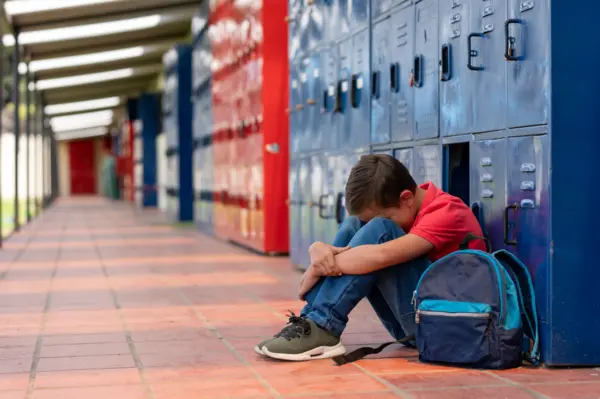Mastering Crisis Management for Schools: 14 Essential Strategies for Educators
In today’s unpredictable world, crisis management for schools has become a crucial skill for all secondary school professionals. From natural disasters to security threats, from mental health emergencies to public health crises, educators must be prepared to respond swiftly and effectively. This comprehensive guide offers 14 essential crisis management strategies to protect students, staff, and communities.

1. Develop a Comprehensive Crisis Management Plan for Schools
Create a detailed plan addressing various potential crises:
- Outline clear protocols for different emergency types
- Define roles and responsibilities for staff members
- Establish communication strategies for all stakeholders
- Detail evacuation and lockdown procedures
- Plan collaboration with local emergency services
Practical Application: Conduct an annual review of your crisis management plan, involving representatives from all school departments to ensure comprehensive coverage.
2. Form a Crisis Management Team
Assemble a diverse team of staff members with varied expertise:
- Schedule regular meetings to review and update the plan
- Provide specialized training in crisis response
- Prepare team members for leadership roles during emergencies
Practical Application: Assign each team member a specific area of focus (e.g., communication, evacuation, first aid) and have them become the resident expert in that area.
3. Conduct Regular Drills and Simulations
Practice makes perfect, especially in crisis situations:
- Implement monthly fire drills
- Conduct quarterly lockdown drills
- Organize bi-annual severe weather drills
- Facilitate annual tabletop exercises simulating various scenarios
Practical Application: After each drill, gather feedback from staff and students to identify areas for improvement and adjust procedures accordingly.
4. Invest in Security Measures
Implement appropriate security measures:
- Install controlled access points
- Set up a network of security cameras
- Implement a visitor management system
- Conduct regular security audits
Practical Application: Partner with local law enforcement to conduct a yearly security assessment of your school, addressing any vulnerabilities identified.
5. Prioritize Mental Health Support
Be prepared for mental health crises:
- Train all staff in mental health first aid
- Establish clear protocols for suicide prevention and intervention
- Build strong relationships with local mental health professionals
Practical Application: Create a “wellness room” where students can go to de-stress and speak with a counselor if needed.
6. Develop Strong Community Partnerships
Build relationships with key community stakeholders:
- Local law enforcement agencies
- Fire departments
- Hospitals and health services
- Mental health providers
- Community organizations offering crisis support
Practical Application: Invite community partners to participate in your school’s crisis management drills and provide feedback.
7. Create a Crisis Communication Plan
Establish clear communication channels and protocols:
- Implement robust internal communication systems
- Develop effective external communication strategies
- Create a social media management plan for crises
Practical Application: Designate and train a crisis communication team, including a social media manager, to handle all communications during an emergency.
8. Implement a Trauma-Informed Approach
Recognize the potential for trauma in crises:
- Provide staff training in trauma-informed practices
- Prepare to offer ongoing support after a crisis
- Address the long-term impacts of traumatic events
Practical Application: Develop a “comfort kit” for each classroom, including items like stress balls, coloring books, and fidget toys to help students cope with anxiety during and after a crisis.
9. Regularly Update Technology and Infrastructure
Ensure your school’s technology supports crisis management:
- Maintain up-to-date emergency contact information
- Implement reliable emergency alert systems
- Secure backup power sources
Practical Application: Conduct a bi-annual technology audit to ensure all crisis-related systems are functioning optimally.
10. Foster a Culture of Preparedness
Encourage a school-wide culture valuing safety and preparedness:
- Regularly discuss safety procedures with students
- Encourage reporting of potential safety concerns
- Celebrate successful drill performances
Practical Application: Implement a “Safety Star of the Month” program to recognize students who contribute to school safety and preparedness.
11. Plan for Continuity of Education
Prepare for maintaining education during extended crises:
- Develop plans for remote or hybrid learning
- Train staff in alternative teaching methods
- Create systems to support resource-limited students
Practical Application: Establish a “tech lending library” with devices and hotspots that students can borrow during extended school closures.
12. Conduct Post-Crisis Evaluations
After any crisis or drill:
- Debrief thoroughly with the crisis management team
- Gather feedback from all stakeholders
- Use insights to improve your crisis management plan
Practical Application: Create a standardized post-crisis evaluation form to ensure consistent and comprehensive feedback collection.
13. Stay Informed About Emerging Threats
Keep abreast of new potential threats:
- Connect with local and national education and safety organizations
- Attend relevant conferences and training sessions
- Regularly review and update crisis management strategies
Practical Application: Assign team members to follow specific safety-related publications or organizations and report back monthly on new developments.
14. Prioritize Staff Well-being
Recognize the stress of crisis management on staff:
- Provide resources for staff mental health
- Offer debriefing sessions after crises or challenging drills
- Ensure opportunities for staff to voice concerns and suggestions
Practical Application: Implement a “buddy system” where staff members check in on each other’s well-being during and after crises.
Remember, effective crisis management for schools is an ongoing process requiring continuous evaluation, updating, and practice. By prioritizing these strategies, we can create safer school environments and respond more effectively when crises occur.
We’d love to hear from our community of secondary school professionals: What crisis management strategies have been most effective in your schools? How do you balance preparedness with maintaining a positive school atmosphere? Share your experiences and insights in the comments below!
Bridget Johnson
Looking for support in a community of student life professionals?
Look no further than the Deans' Roundtable Community
- Network with a vast directory of student life professionals like yourself
- Gain a multitude of professional development opportunities to be the best version of yourself
- Gather expert advice on the important questions you need answered

